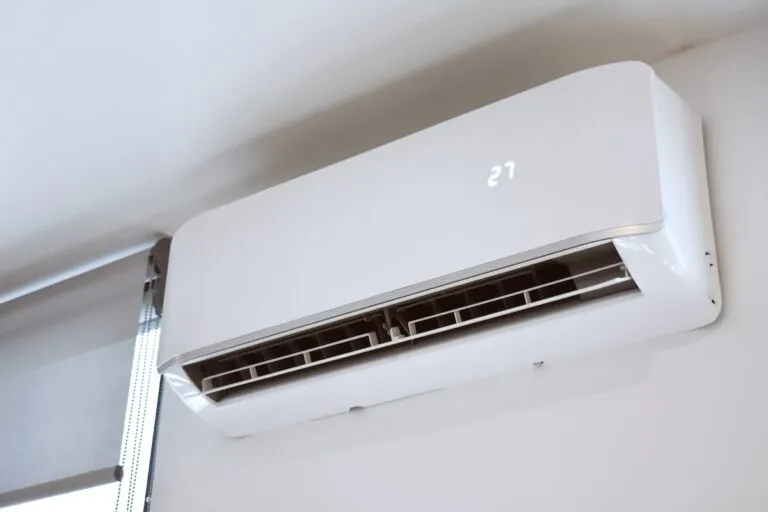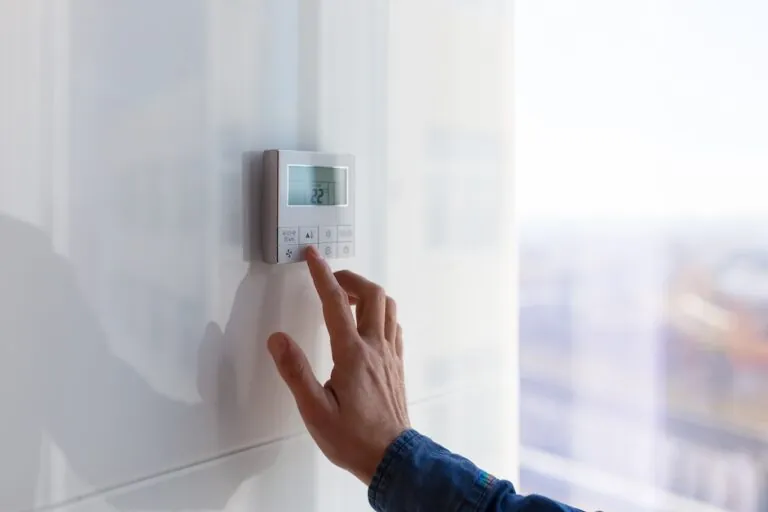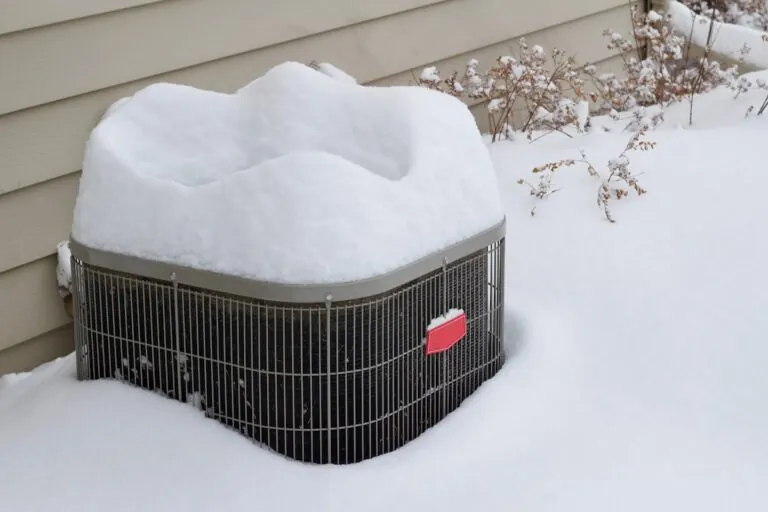When your air conditioner is running but warm air is coming from the vents, it’s more than frustrating—it’s a problem that needs quick attention. Whether it’s the middle of a heatwave or just a sticky summer evening, a non-cooling AC can disrupt your comfort, your sleep, and even your health.
In this guide, you’ll learn:
- How to spot the early signs your AC isn’t cooling
- The most common causes behind the issue
- What you can do right now to fix or prevent it
Stop Googling “why is my AC not blowing cold air?”—Genz-Ryan has expert-backed answers and tips to help you stay cool and stress-free.

🚩 Signs That Your AC Isn’t Blowing Cold Air
Catching the warning signs early can save you from sweating it out—or paying for a major repair later. If your air conditioner isn’t cooling like it should, look for these red flags:
🌬️ 1. Warm or Room-Temperature Air from Vents
If the air coming out feels lukewarm instead of icy cool, something’s off. This is often the first and most obvious indicator of a cooling issue.
Quick Check: Set your thermostat to a low temp and place your hand in front of a vent. If it doesn’t feel noticeably cooler after 5–10 minutes, your AC likely isn’t functioning properly.
💨 2. Weak or Uneven Airflow
You may notice certain rooms aren’t getting any cool air—or the airflow feels weaker than usual. This can point to:
- A clogged air filter
- A failing blower motor
- Ductwork issues or obstructions
🔊 3. Unusual Noises During Operation
Strange sounds like banging, hissing, or rattling could signal:
- Loose parts
- Refrigerant leaks
- Electrical problems
Tech Tip: A hissing sound may indicate a refrigerant leak—don’t ignore it.
❄️ 4. Ice Buildup on Coils or Lines
If you see frost or ice forming on your outdoor unit or refrigerant lines, it typically means poor airflow or low refrigerant. Either way, it’s time to shut the system off and call a technician.
💡 5. Higher Than Normal Energy Bills
Has your electricity bill spiked even though your usage hasn’t? A struggling AC uses more power to try and meet your set temperature.
🔁 6. Frequent On-Off Cycling
Short cycling—when your AC keeps turning on and off rapidly—prevents proper cooling and wears out your system fast. It’s often caused by:
- Incorrect thermostat placement
- Electrical issues
- An oversized unit
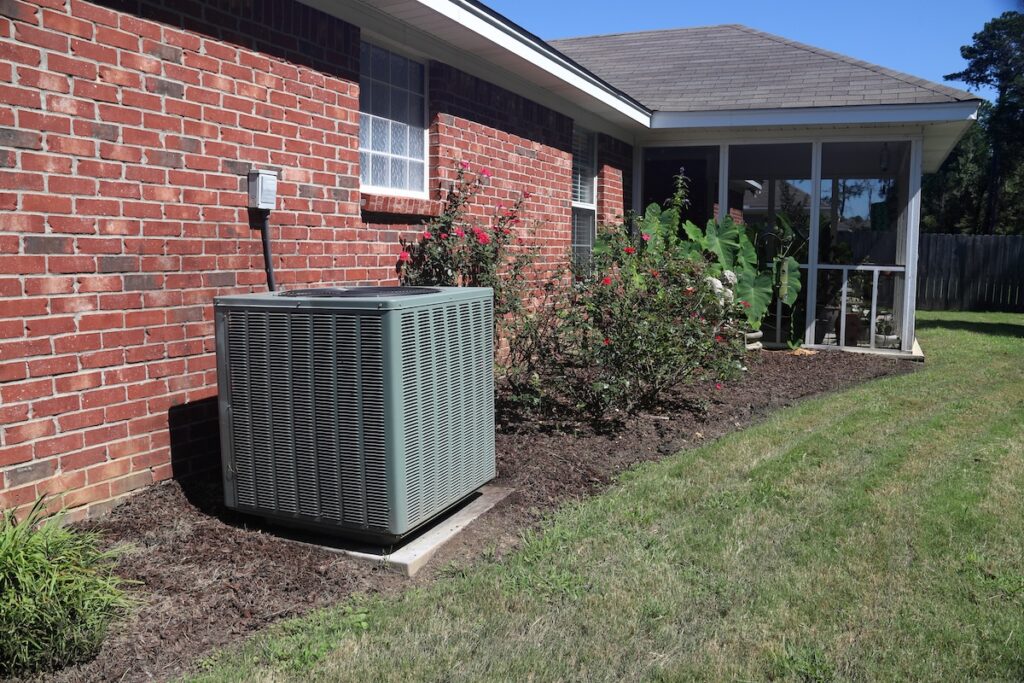
⚠️ Why It’s Risky When Your AC Isn’t Blowing Cold Air
A malfunctioning air conditioner isn’t just inconvenient—it can have serious health, safety, and structural consequences. Here’s why timely repairs are essential:
🌡️ 1. Increased Risk of Heat-Related Illness
When indoor temperatures rise, especially during a Minnesota heatwave, your body may struggle to regulate its core temperature. This can lead to:
- Heat exhaustion (symptoms: dizziness, heavy sweating, nausea)
- Heat stroke, a medical emergency, especially for children, older adults, and people with chronic illnesses
Health Fact: The CDC reports hundreds of heat-related deaths each year in the U.S., many due to indoor heat exposure without proper air conditioning.
💨 2. Poor Indoor Air Quality and Breathing Issues
Your AC does more than cool—it also filters and dehumidifies the air. When it stops working properly:
- Dust, allergens, and pollutants can circulate unchecked
- High humidity can lead to musty odors and mold spores
- Asthma and allergy symptoms may worsen
Tech Tip: If your AC runs but the air feels damp or stale, the dehumidification function may be failing.
🧱 3. Moisture Damage and Mold Growth
Excess indoor humidity caused by an underperforming AC system can damage:
- Drywall and paint (leading to bubbling, warping)
- Furniture and wood floors
- Insulation and attic structures
Mold thrives in warm, moist environments, creating costly structural repairs and health hazards over time.
AC Not Blowing Cold Air: 6 Common Reasons Why
If your air conditioner is running but not cooling, the issue usually comes down to one of these common problems. Here’s how to recognize them—and what they mean for your system:
In this short video, Jon from Genz-Ryan breaks down the top 3 reasons your air conditioner might be falling short — and what you can do about it.
1) Refrigerant Leak:
Refrigerant is the cooling agent your AC uses to remove heat from indoor air. If levels are low—often due to a leak—your AC won’t be able to cool properly.
Signs to Watch For:
- Hissing sounds near the outdoor unit
- Ice buildup on refrigerant lines
- Air feels cool but not cold
Important: Only licensed HVAC pros can handle refrigerant. If you suspect a leak, call for service right away.
2) Dirty Air Filters:
A dirty filter restricts airflow, making your system work harder and reducing its cooling efficiency.
How to Check: Remove the filter and hold it up to a light. If you can’t see light through it, it’s time to replace it.
Homeowner Tip: Change your filter every 1–3 months, especially during peak cooling season.
3) Faulty Compressor:
The compressor is like the heart of your AC system. If it’s damaged or malfunctioning, refrigerant won’t circulate, and your system can’t cool.
What You’ll Notice:
- AC hums but doesn’t cool
- Breaker keeps tripping
- Warm air despite a working fan
Repair Cost Estimate: $1,500–$2,500 (may warrant system replacement depending on age).
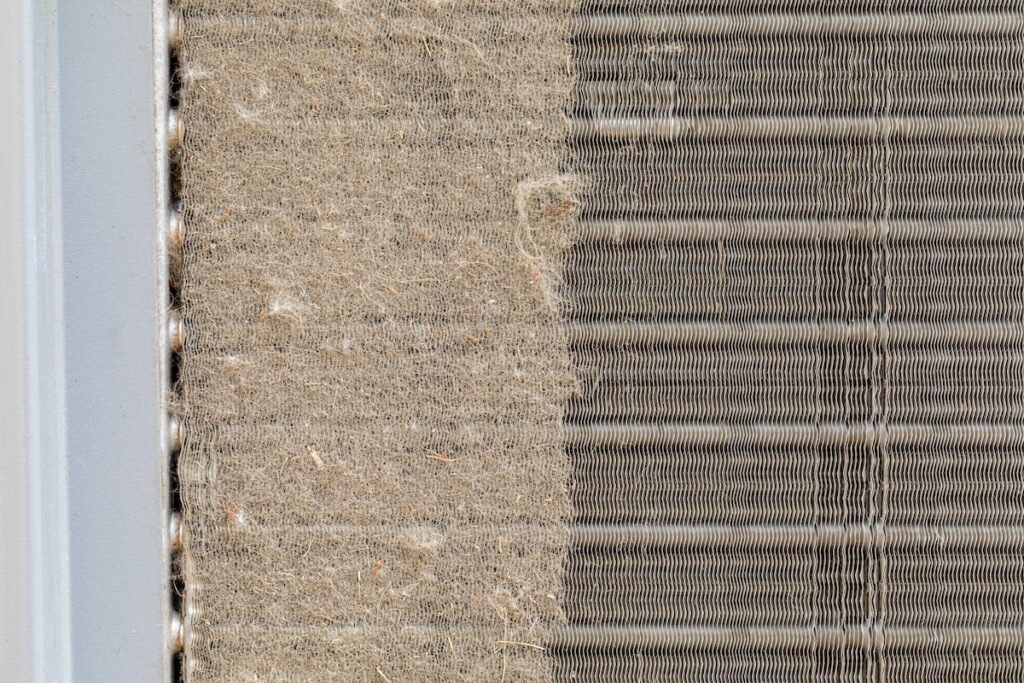
4) Blocked or Dirty Condenser Coil
Located in the outdoor unit, the condenser coil releases heat collected from your home. When it’s covered in dirt, leaves, or debris, it can’t do its job.
Symptoms:
- Hot air blowing from vents
- Outdoor unit feels hotter than normal
- System runs constantly but doesn’t cool
Fix: Carefully clean the coil with a hose (not high pressure) or schedule professional service.
5) Thermostat Problems:
Sometimes, the issue isn’t your AC—it’s your thermostat.
Potential Problems:
- Dead batteries or loose wiring
- Incorrect mode settings (set to “heat” instead of “cool”)
- Malfunctioning sensors
Quick Fix: Try replacing the batteries and double-check your settings. Still no luck? A smart thermostat upgrade may be worth considering.
6) Electrical or Capacitor Problems
AC systems rely on various electrical components to power the fan, compressor, and more. Faulty wiring, blown capacitors, or tripped breakers can stop cooling fast.
What to Look For:
- AC won’t turn on at all
- Unit powers up but doesn’t cool
- A buzzing noise at startup
Warning: Electrical repairs should always be handled by a licensed technician.
What to Do If You Suspect Your AC Is Broken
Before you assume the worst, there are a few simple checks you can do that might fix the problem—or at least rule out obvious issues.
Start with your thermostat. Make sure it’s set to cool and the temperature is lower than your room temp. If it’s a battery-powered model, try replacing the batteries. A misconfigured or dead thermostat is a surprisingly common issue.
Next, take a look at your air filter. If it’s dirty or clogged, replace it. A clean filter allows for proper airflow—and may be all you need to restore performance.
Step outside and inspect your outdoor unit. Leaves, twigs, and grass can block airflow around the condenser. Clear away any debris and make sure the unit has a few feet of space on all sides.
If you spot ice on the refrigerant lines or coil, shut off the AC immediately and let it thaw. Ice usually signals airflow restriction or low refrigerant, and continuing to run the system could cause damage.
Finally, check your electrical panel. A tripped breaker or blown fuse can cut power to your AC. Reset any tripped breakers, but if it happens repeatedly, it’s time to call in a pro.
Still not cooling? That’s your sign to call Genz-Ryan. Our certified HVAC techs can pinpoint the problem and get your system back to blowing cold air—fast.

How Much Professional Repairs Cost
The cost of repairing your AC unit can vary depending on the nature of the problem and your location. Here are some typical repair costs you might encounter:
- Refrigerant Leak Repair: $200-$1,500, depending on the location and severity of the leak.
- Compressor Replacement: $1,500-$2,500, including labor costs.
- Thermostat Replacement: $100-$300, depending on the type and complexity of the thermostat.
- Air Filter Replacement: $20-$50, depending on the filter type and brand.
- Electrical Repairs: Costs can vary widely depending on the specific issue, but typically range from $100-$500.
It’s important to obtain multiple quotes from reputable HVAC companies and to ask about warranties on parts and labor before proceeding with any repairs.
How to Prevent Your AC From Breaking Down in the Future
While some AC breakdowns are unavoidable, regular maintenance and care can significantly reduce the risk of costly repairs. Here are some preventive measures you can take:
Schedule Professional HVAC Maintenance (At Least Once a Year)
Annual inspections can catch small issues before they turn into expensive breakdowns. Technicians clean internal components, check refrigerant levels, test electrical systems, and optimize performance.
Homeowner Tip: Spring is the ideal time to schedule maintenance—before peak summer heat puts strain on your system.
Change Air Filters Regularly:
Dirty filters are a top cause of airflow restriction and AC inefficiency. Change them every 1–3 months or sooner if you have pets or allergies.
Bonus: Clean filters also improve indoor air quality and reduce strain on your blower motor.
Keep the Outdoor Unit Clear:
Leaves, grass clippings, and dirt can block your outdoor condenser and make your AC work harder.
Checklist:
- Rinse the unit gently with a garden hose
- Trim plants at least 2 feet around the unit
- Clear debris after mowing or storms
Inspect and Seal Leaky Ductwork
Up to 30% of cooled air can be lost through leaks in your duct system. Visually inspect exposed ducts for gaps or damage and seal them with mastic or foil tape.
Efficiency Tip: Sealed ducts improve both cooling power and energy savings.
Monitor Refrigerant Levels:
Low refrigerant = poor cooling and higher bills. It could mean there’s a leak.
If you notice:
- Longer cooling times
- Ice on refrigerant lines
- Hissing noises
Contact a pro immediately to inspect and recharge your system.
Upgrade to a Smart Thermostat
Programmable thermostats help reduce wear and tear by optimizing run times. Many smart models also alert you to maintenance issues or abnormal behavior.
Energy Fact: Smart thermostats can reduce HVAC energy use by up to 10%, according to the U.S. Department of Energy.
Act Fast on Warning Signs
Don’t ignore strange smells, noises, or reduced performance. Addressing symptoms early often prevents major repairs down the line.
Rule of Thumb: If it sounds or feels “off,” it probably is—call for a quick inspection.
✅ Let Genz-Ryan Get Your AC Back on Track
If your AC isn’t blowing cold air, don’t sweat it—literally. Knowing the signs, acting fast, and calling in the pros can save you time, money, and discomfort.
Need help? Genz-Ryan’s expert HVAC team is ready to diagnose and fix the issue quickly. Contact us today and stay cool all summer long.
FAQs
Can a dirty air filter cause my AC to stop cooling?
Absolutely. A clogged air filter restricts airflow, which can cause your system to overheat, freeze up, or run inefficiently. Replacing the filter is one of the easiest (and most overlooked) fixes.
How long should I wait after resetting my AC breaker?
After flipping the breaker back on, give your AC 5–10 minutes to reboot and start cooling again. If it still doesn’t work, there may be a deeper electrical issue that needs professional attention.
Is it safe to run my AC if it’s not cooling?
No. Running a malfunctioning AC—especially with ice buildup or low refrigerant—can cause long-term damage to the compressor or coils. Turn it off and call a technician to avoid a bigger (and costlier) issue.
Why is my AC running but not blowing cold air?
This is usually due to low refrigerant, a dirty air filter, or a thermostat issue. If your system is on but blowing warm or room-temperature air, check the filter and thermostat first. If those aren’t the issue, it’s best to call a technician to inspect for leaks or compressor problems.




